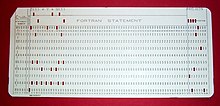Research into different paper finishes
http://en.wikipedia.org/wiki/Perforation
Perforation
A perforation is a small hole in a thin material or web. There is usually more than one perforation in an organized fashion, where all of the holes are called aperforation. The process of creating perforations is called perforating, which involves puncturing the workpiece with a tool.
Perforations are usually used to allow easy separation of two sections of the material, such as allowing paper to be torn easily along the line. Packaging with perforations in paperboard or plastic film is easy for consumers to open. Other purposes include filtrating fluids, sound deadening, allowing light or fluids to pass through, and to create an aesthetic design.[1]
Various applications include packaging films (to allow the contents to breathe), medical films, micro perforated plate and sound and vapor barriers.
A perforation is a small hole in a thin material or web. There is usually more than one perforation in an organized fashion, where all of the holes are called aperforation. The process of creating perforations is called perforating, which involves puncturing the workpiece with a tool.
Perforations are usually used to allow easy separation of two sections of the material, such as allowing paper to be torn easily along the line. Packaging with perforations in paperboard or plastic film is easy for consumers to open. Other purposes include filtrating fluids, sound deadening, allowing light or fluids to pass through, and to create an aesthetic design.[1]
Various applications include packaging films (to allow the contents to breathe), medical films, micro perforated plate and sound and vapor barriers.
Die and punch sets can be used for thicker materials or materials that require large holes; this process is the most common for metalworking. The workpiece issheared by pressing (either by machine or hand tool) the punch through the workpiece and into the die. The middle section of the workpiece is scrap; commonly known as the chad in paper and similar materials. The punch and die are shaped to produce the desired shaped hole. The clearance (the distance between the outside circumference of the punch and the inner circumference of the die) must be properly maintained to ensure a clean cut. Burrs are produced on the side of the workpiece that is against the die.[1]
Common applications are fruit and vegetable bags, hole punching and ticket punching.
Perforation frequently refers to the practice of creating a long series of holes or slits so that paper or plastics can be torn more easily along a given line: this is used in easy-open packaging. Since the creation of perforation devices in the 1840s and 1850s, it has seen use in several areas. Postage stamps are one common application of this, where small round holes are cut in lines to create individual pieces (see postage stamp separation). Perforations on stamps are rather large, in the order of a millimeter, in comparison other perforated materials often have smaller holes. It is common for notebooks and legal pads to have perforations making it easier to tear out individual pages. In today's cases, perforation is used in ways to separate loose leaf (or even a form of graph paper from a ringed binder). A fine perforation next to the rings allows the page to be separated from the book with no confetti. Screwcaps on glass or plastic bottles are sealed with a ring at the bottom of the cap attached by perforation. Twisting the cap has the effect of rupturing the material between the perforations and indicating that the original seal has been broken.
Film stock is perforated to allow it to be moved precise distances at a time continuously. Similarly, punched cards for use in looms and later in computers input and output devices in some cases were perforated to ensure correct positioning of the card in the device, and to encode information.
Perforation of steel strips is used in the manufacture of some zesters and rasps.
Historically, perforation patterns other than linear were used to mark stamps (see Perfin). Today, similarly elaborate perforation patterns continue to be used in orienteering.
